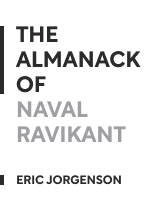

This article is an excerpt from the Shortform book guide to "The Almanack of Naval Ravikant" by Eric Jorgenson. Shortform has the world's best summaries and analyses of books you should be reading.
Like this article? Sign up for a free trial here .
What’s leverage? How can you use this principle to build wealth over time?
The Almanack of Naval Ravikant shares Ravikant’s ideas on leverage. He argues that leverage is a key component of building a passive income. He explains how you can leverage labor, money, and products that can be replicated without further inputs.
Keep reading to learn about three types of leverage in financial management.
Types of Leverage in Financial Management
Leverage is the ability to multiply effort. In the context of building passive income, this is helpful because any investment (effort) you put into an opportunity can be magnified by the leverage applied to it. Ravikant distinguishes three types of leverage in financial management.
#1: Labor
The people who work for you provide leverage through their labor—for example, a task done by two people should take half as long as a task done by one. Ravikant believes this is the worst kind of leverage simply because it’s hard to manage people.
(Shortform note: While Ravikant doesn’t prefer labor as a means of leverage, successful business owners generally have at least some employees. Experts argue that managing employees is a critical skill to building successful businesses.)
#2: Money
This is a good form of leverage because it can amplify any decision you make. In the typical start-up, this comes in the form of capital invested in a fledgling company. If the idea is sound, money can make it a reality.
(Shortform note: Money is the main form of leverage in the venture capital (VC) industry. Accordingly, it’s become associated with propping up bad ideas. In many cases, an unprofitable business can be made to appear successful merely because it’s received a lot of VC money. Research shows that 30-40% of VC-backed companies completely fail, and 75% don’t make enough profit to cover the initial investment. Money, then, may be an effective form of leverage, but it doesn’t ensure business success or wealth.)
#3: Products That Can Be Replicated Without Further Inputs
Two primary examples of this include media such as books, art, videos, or music, and code such as the script behind your favorite app. This is the best and newest kind of leverage for building wealth, according to Ravikant. A good book needs only to be written once, then it can be reproduced continuously, generating income on each sale.
(Shortform note: It’s important to maintain perspective on this idea: It’s not easy to make money developing a product. Most published books, for instance, don’t turn a profit at all, and few musicians make an income just from releasing music. In cases like these, most experts advise that developing a product has to be accompanied by a comprehensive marketing strategy and supplemented by other streams of income.)

———End of Preview———
Like what you just read? Read the rest of the world's best book summary and analysis of Eric Jorgenson's "The Almanack of Naval Ravikant" at Shortform .
Here's what you'll find in our full The Almanack of Naval Ravikant summary :
- Millionaire Naval Ravikant's advice on how to build wealth and happiness
- The three types of leverage you'll need to become successful
- The habits to adopt that will lead to happiness






